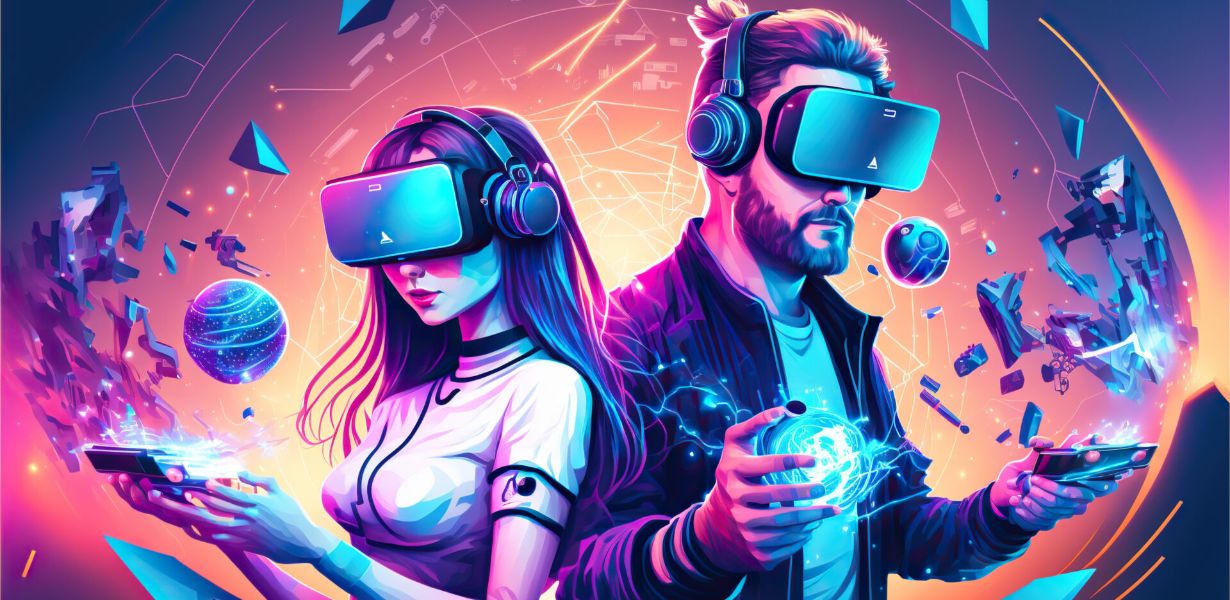
Unraveling the Metaverse: The Future of 3D & Animation in Virtual Worlds
- Post
- August 7, 2023
- 3D & Animation, Web Design, Web Design Trends
- 0 Comments
In recent years, the concept of the metaverse has been gaining significant traction, captivating the imaginations of tech enthusiasts, gamers, and creative minds alike. This virtual realm, where digital and physical worlds converge, holds tremendous potential for reshaping how we interact, create, and entertain ourselves. In this comprehensive blog, we delve into the metaverse, exploring its implications, the future of 3D animation within it, and the possibilities it offers for a new era of immersive experiences.
Understanding the Metaverse
The metaverse is a collective virtual shared space that is created by the convergence of numerous interconnected virtual environments. It is not limited to any single platform or technology but rather emerges from the integration of virtual reality (VR), augmented reality (AR), and the internet. In essence, it is a vast interconnected web of virtual worlds where users can interact, socialize, conduct business, and engage in various activities.
Key Points:
- The metaverse goes beyond isolated virtual experiences and encourages seamless interactions between users and digital content.
- Various technologies, including VR headsets, haptic feedback devices, and advanced graphics, contribute to creating a more immersive and realistic metaverse experience.
- As the metaverse evolves, it is expected to redefine the way we perceive reality, presenting new opportunities and challenges for industries and individuals.
The Role of 3D Animation in the Metaverse
At the heart of the metaverse lies 3D animation, a powerful tool that breathes life into virtual environments and characters. From lifelike avatars to stunning visual effects, 3D animation is the driving force behind creating engaging and immersive experiences within the metaverse.
Key Points:
- 3D animation enables the creation of realistic and interactive virtual environments, enhancing the overall user experience.
- In the metaverse, 3D animation serves as a bridge between the physical and digital worlds, blurring the lines between reality and fiction.
- As the metaverse gains popularity, demand for skilled 3D animators and artists is expected to soar, opening up exciting career opportunities in this evolving landscape.
The Future of 3D Animation in Virtual Worlds
The future of 3D animation in virtual worlds is poised to be nothing short of revolutionary. Advancements in technology, coupled with the continuous growth of the metaverse, will drive 3D animation to new heights.
Key Points:
- Real-time rendering and motion-capture technologies will enable more seamless and interactive experiences within the metaverse.
- Artificial intelligence (AI) integration in 3D animation will lead to smarter and more realistic virtual characters and environments.
- Collaborative tools and platforms will empower creators to collaborate and co-create within the metaverse, fostering a thriving creative community.
Exploring 3D Animation in Virtual Worlds: Use Cases
The applications of 3D animation within the metaverse are vast and diverse. Let’s explore some compelling use cases that showcase the potential of this technology.
Virtual Events and Conferences
Virtual events and conferences are becoming increasingly popular, allowing attendees from around the world to participate without leaving their homes. 3D animation can enhance these gatherings by creating lifelike avatars and immersive virtual venues, providing an engaging and interactive experience for participants.
Gaming and Entertainment
Gaming has always been at the forefront of technological advancements, and the metaverse is no exception. With 3D animation, game developers can craft breathtaking virtual worlds, captivating storylines, and lifelike characters that draw players deeper into the gaming experience.
Virtual Real Estate and Architecture
The metaverse opens up possibilities for virtual real estate and architecture, where users can explore and design virtual properties. 3D animation allows for the visualization of architectural plans and interior designs, offering clients a realistic preview of their dream spaces.
Educational Simulations
In the metaverse, educational institutions can leverage 3D animation to create interactive and immersive learning environments. From historical reconstructions to scientific simulations, students can engage with subjects in an entirely new way.
Virtual Commerce and Shopping
With the metaverse acting as a vast digital marketplace, 3D animation can revolutionize the e-commerce experience. Virtual stores with 3D-rendered products and interactive shopping experiences can provide customers with a more tangible and enjoyable shopping journey.
3D Animation Examples and Tools
To better understand the capabilities of 3D animation within the metaverse, let’s explore some remarkable examples and the tools that make them possible.
Key Points:
- Epic Games’ Unreal Engine and Unity are popular game engines that support advanced real-time 3D rendering for immersive experiences.
- Virtual reality platforms like Oculus and HTC Vive offer hardware for users to engage with 3D animated content.
- 3D modeling software like Blender and Autodesk Maya enable artists to create intricate 3D assets and characters.
The 3D Animation Process: Behind the Scenes
The process of 3D animation is an intricate and collaborative journey that brings virtual worlds to life. Here’s a glimpse into the steps involved in the 3D animation pipeline.
Pre-production: In this phase, the concept, storyboards, and initial designs are developed. It sets the foundation for the entire animation project.
3D Modeling and Texturing:Artists create 3D models of characters, objects, and environments and apply textures to bring them to life with color and detail.
Rigging:Rigging involves creating a virtual skeleton for characters, enabling them to move realistically and express emotions.
Animation: During animation, the characters and objects are given movement, making them dynamic and interactive within the virtual world.
Lighting and Rendering
Lighting is crucial for setting the mood and atmosphere of the virtual environment, and rendering produces the final high-quality images.
Post-production
In this final stage, audio, special effects, and other finishing touches are added to create a polished end product.
Frequently Asked Questions
1. How is the metaverse different from virtual reality?
While virtual reality provides immersive experiences through headsets, the metaverse is a collective virtual space where various virtual experiences converge and intertwine.
2. Can 3D animation be used outside the metaverse?
Absolutely! 3D animation is widely used in various industries, including film, advertising, architecture, and gaming.
3. What skills are required to become a 3D animator for the metaverse?
A 3D animator needs a strong foundation in animation principles, 3D modeling, and software proficiency in tools like Blender or Maya.
4. How will the metaverse impact social interactions?
The metaverse will revolutionize social interactions, allowing people to meet, socialize, and collaborate in virtual spaces regardless of physical distance.
5. Is the metaverse safe and secure?
While there are concerns, metaverse platforms are continuously improving security measures to ensure user safety and data protection.
Final Words
The metaverse is an ever-expanding realm of infinite possibilities, and 3D animation serves as its creative backbone. As we venture into this exciting future, we can look forward to groundbreaking experiences, unimaginable collaborations, and a paradigm shift in how we perceive and interact with the digital landscape. Embrace the metaverse, and let your imagination soar beyond the boundaries of reality.



